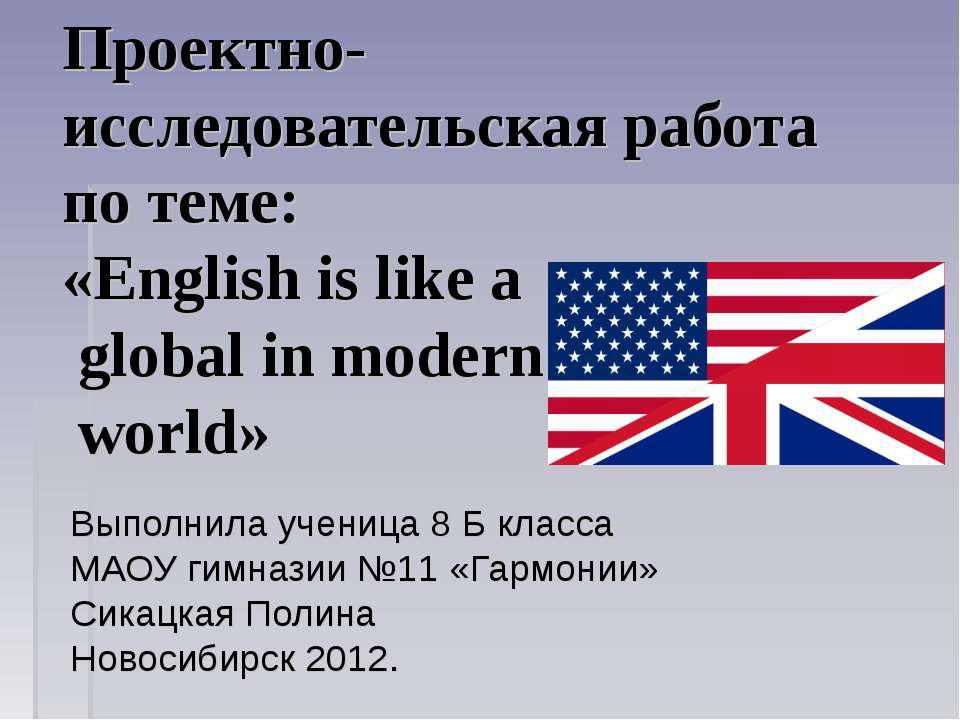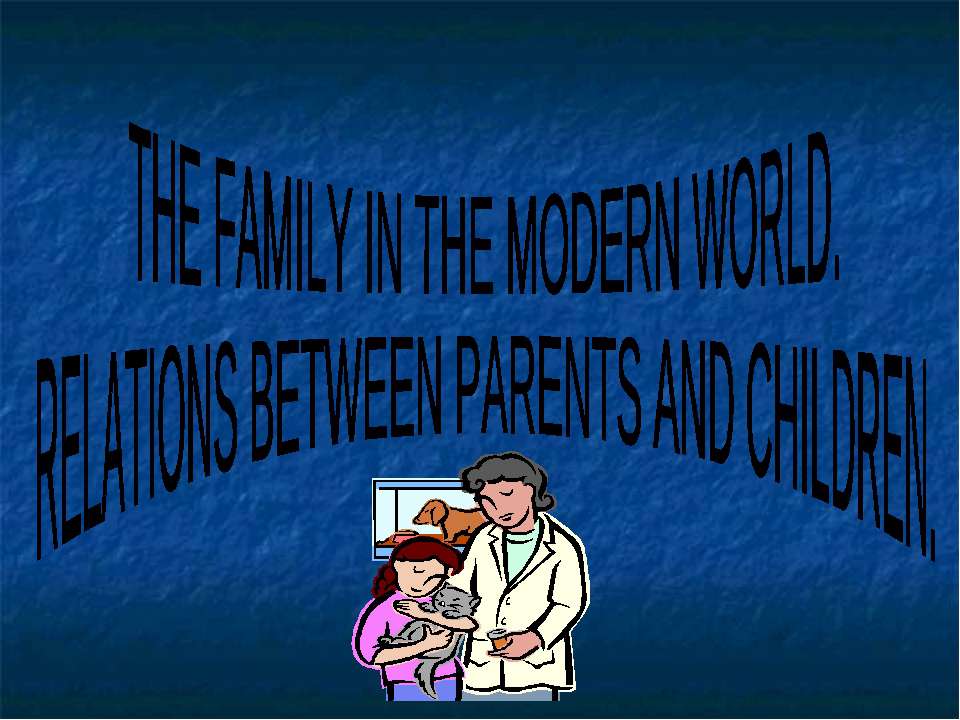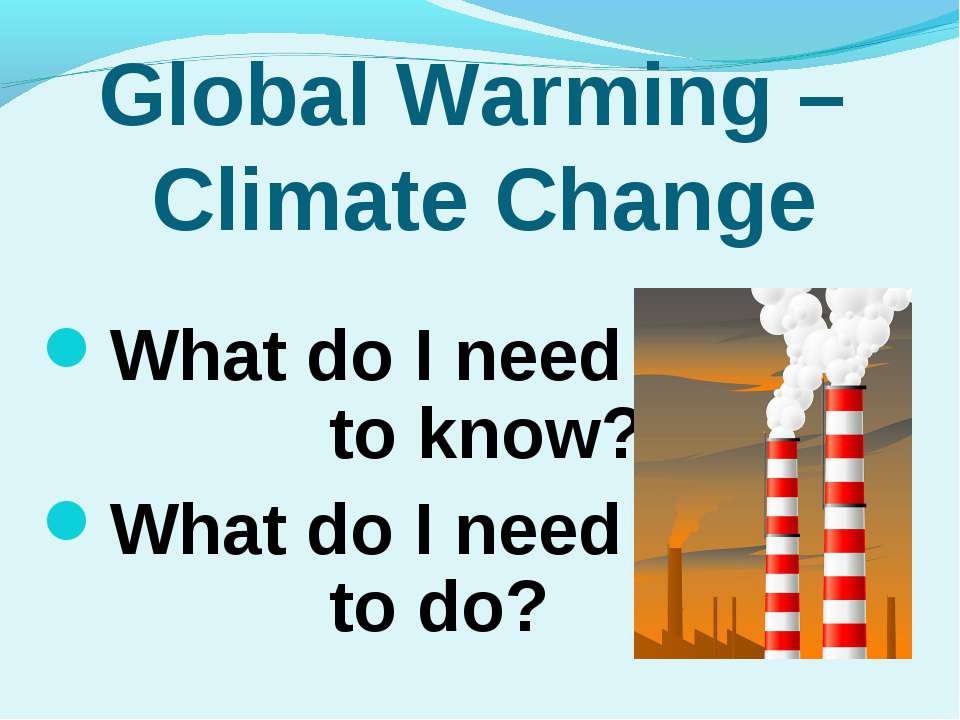Презентация - "English is like a global in modern world"

- Презентации / Презентации по английскому языку
- 0
- 13.10.20
Просмотреть и скачать презентацию на тему "English is like a global in modern world"
Сайт klass-uchebnik.com предлагает качественные учебные материалы для школьников, родителей и учителей. Здесь можно бесплатно читать и скачивать современные учебники, рабочие тетради, а также наглядные презентации по всем предметам школьной программы. Материалы распределены по классам и темам, что делает поиск максимально удобным. Каждое пособие отличается логичной структурой, доступной подачей материала и соответствует действующим образовательным стандартам. Благодаря простому языку, наглядным схемам и практическим заданиям, обучение становится легче и эффективнее. Учебники подойдут как для ежедневной подготовки к урокам, так и для систематического повторения перед экзаменами.
Особое внимание стоит уделить разделу с презентациями - они становятся отличным визуальным дополнением к теории, помогают лучше понять сложные темы и удерживают внимание учащихся. Такие материалы удобно использовать в классе на интерактивной доске или при самостоятельной подготовке дома. Все размещённые на платформе материалы проверены на актуальность и соответствие учебной программе. Это делает сайт надёжным помощником в образовательном процессе для всех участников: школьников, учителей и родителей. Особенно удобно, что всё доступно онлайн без регистрации и в свободном доступе.
Если вы ищете надежный источник для подготовки к урокам, контрольным и экзаменам - klass-uchebnik.com станет отличным выбором. Здесь вы найдёте всё необходимое, включая "English is like a global in modern world", чтобы сделать обучение более организованным, интересным и результативным.
Проектно-исследовательская работа по теме: «English is like a global in modern world» Выполнила ученица 8 Б класса МАОУ гимназии №11 «Гармонии» Сикацкая Полина Новосибирск 2012.
I decided to take this title because globalisation of English language has a lot of sides and different ways for distribution. I think, it is interesting, specially for people who works with English and wants to know something about this language.
Content Introduction 2 Chapter 1 6 Chapter 2 10 Chapter 3 13 Conclusion 22 Bibliography 25 Annex 26
Introduction The actuality of the problem. Nowadays the English language is the most widely spoken language in the world. It is learned as a second language all around the world and used as an official language of the European Union and many Commonwealth countries, as well as in many world organisations. The aim of our investigation is to study the English language as a subject which uniting countries, organisations, societies all over the world and its role in the process of globalisation and interaction.
The task of work To find the main in creating English; To understand why English became global, where and how it has begun; To know the story of English; To know about some people who learn English and it’s story of creating; To know about geographical background.
Chapter 1 Geographical background Nearly 375 million people all over the world speak English as their first language. According to some data nowadays English is the third largest language by number of native speakers, after Mandarin Chinese and Spanish. English is also an important language in several former colonies of the United Kingdom, such as Bahrain, Bangladesh, Brunei, Cyprus, Malaysia and the United Arab Emirates.
Chapter 2 Historical background The process of decolonisation, which took place in the 20th century demanded to create new national languages. Some countries such as Singapore adopted a multi-language formula which reflected the ethnic languages of the new state. For example, in India, Hindi is the sole national language and English technically an ‘associate’.
Chapter 3 Socio-cultural background The English language has been an important medium of the press for nearly 400 years. The Weekly News began to appear from 1622; the London Gazette in 1666; and Lloyd’s News in 1696. Scientific publishing English is now the international language of science and technology. It has not always been so. The renaissance of British science in the 17th century put English language science publications on the first pace in the scientific community. Advertising By the end of the nineteenth century a fusion several factors led to a large increase in the use of advertisements in publications. Mass production caused the flow of goods, consumer purchasing power was growing, new printing techniques provided new possibilities. Broadcasting It took many years of experimental physical researches before it was possible to send the first radio signals through the air, without any wires. English was the first language to be transmitted by radio. Cinema The new technologies which followed the discovery of electrical power fundamentally altered the nature of home and public entertainment, and provided fresh directions for the development of the English language. Britain and France provided an initial impetus to the artistic and commercial development of the cinema from 1895. Popular music The cinema was one of two new entertainment technologies which emerged at the end of the nineteenth century: the other was the recording industry. Most of the subsequent technical developments took place in the USA. The first USA patent for magnetic tape was as early as 1927.
Conclusion Because English is so widely spoken, it has often been referred to as a "world language", the lingua franca of the modern era, and while it is not an official language in most countries, it is currently the language most often taught as a foreign language.
Bibliography Ayto, John. Twentieth-Century Words. New York: Oxford University Press, 1999. Burchfield, R. W., ed. The New Fowler's Modern English Usage. New York: Oxford University Press, 1996. Widely respected guide to "correct" usage. Crystal, D. (1995) Cambridge Encyclopedia of the English Language. Cambridge: Cambridge University Press. Crystal, D. (1997) English as a Global Language. Cambridge: Cambridge University Press. Hayakawa, S. I. Language in Thought and Action. 4thed. New York: Harcourt Brace Jovanovich, 1978. Classic work on semantics. Hale, Constance, and Jessie Scanlon. Wired Style: Principles of English Usage in the Digital Age. New York: Broadway Books, 1999. Wired magazine is an influential publication about computer technology. Mencken, H. L. The American Language; an Inquiry into the Development of English in the United States. Raven I. McDavid, Jr., ed. New York: Alfred A. Knopf, 1963. Classic readable and influential examination of the new stream. McCrum, Robert, William Cran, and Robert MacNeil. The Story of English. New York: Viking, 1986. Oxford American Dictionary and Language Guide. New York: Oxford University Press, 1999. Pyles, Thomas, and John Algeo. The Origins and Development of the English Language. New York: Harcourt Brace Jovanovich, 1982. Strunk, William Jr., and E. B. White. The Elements of Style. 3d ed. New York: Macmillan, 1979.












